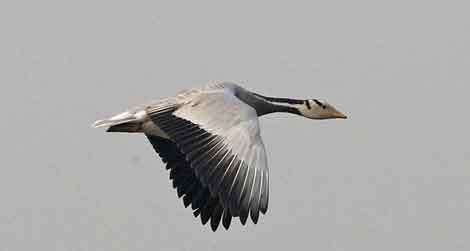Recent climate change posts from the American Association for the Advancement of Science site (plus one from International Energy Agency, and at the bottom, an unrelated post on bar-headed geese):
• Climate Change Already Hurting Agriculture

Changes in agriculture due to climate change
With any number of factors influencing agricultural productivity, from changes in temperature and precipitation to newer technology and improved farming practices, not to mention year to year variations in weather, teasing out the climate effects is a challenge. The study focused on four foods supplying 75% of our calories (corn, rice, wheat, and soybeans) between 1980 and 2008, with changes in temperature more important than changes in precipitation.
Worldwide… yields of corn and wheat declined by 3.8% and 5.5%, respectively, compared with what they would have been without global warming. Rice and soybean production remained the same.
The US and Canada, where temperature increase was less, saw no decline in productivity.

Meanwhile, Europe is now experiencing drought.

European drought—France, Europe’s largest food exporter, is getting less than half as much rain as 1971-2000 averages.
• Drying Rockies Could Bring More Water Woes to Western U.S.
Snow pack is declining sharply. The big population push in Western states occurred at a time of higher-than-average (over the past few centuries) water availability, so even without climate change water availability would likely become a problem. 60 – 80% of drinking water comes from snow melt.
• Losing Nemo?

clown fish Visit National Geographic for information on 9 more species at risk
Clown fish use smell to avoid predators, but in an acidifying ocean this may not be possible. At 700 parts per million carbon dioxide, a level that may be reached by 2100, clown fish and damsel fish swim towards predators.
• Mount Rainier Has Lost One-Seventh of Its Ice and Snow
The loss was between 1970 and 2008-9.
• U.N. Goal of Limiting Global Warming Is Nearly Impossible, Researchers Say
A more advanced climate model run in Canada indicates that with a peak atmospheric level of 450 parts per million carbon dioxide in 2050, temperature increase would reach 2.3°C. This is difficult, and a 3 – 4°C goal is more achievable. To keep temperature increase to 2°C,
would require that greenhouse emissions “ramp down to zero immediately” and that scientists deploy means, starting in 2050, to actively remove greenhouse gases from the atmosphere.

Canadian climate model—we’re currently on the orange trajectory. Note that the different trajectories diverge around 2025, and depend on the decisions we make today (and those we made yesterday).
• Meanwhile, International Energy Agency says that the 450 ppm goal is very difficult. We’re at 390 ppm. Greenhouse gas emissions were 30.6 gigatonnes (billion metric tons = gt) in 2010. The goal of 450 ppm slips away if emissions reach 32 gt by 2020 (it’s cumulative emissions that matter, but a world building coal is unlikely to see a precipitous decline after 2020). 80% of power emissions for 2020 are already locked in, and coal construction is rapid.
In terms of fuels, 44% of the estimated CO2 emissions in 2010 came from coal, 36% from oil, and 20% from natural gas.
Coal expanded 46% in the first decade of the century.
• Threats Sent to Australian Climate Scientists Fuel a Debate
Climate scientists in Australia receive threatening emails; some are moved for their safety. Shadow (opposition) science minister Sophie Mirabella implies this is no big deal and that the information was released to the newspaper for political reasons (Australia is discussing carbon tax).
• Journal Retracts Disputed Network Analysis Paper on Climate
The paper by Edward Wegman, et al, attacking “poor statistical analyses” of mainstream climate scientists, was retracted because of plagiarism. Comments by scientists at the end focus on Wegman’s bad code, bad statistical parameters, and cherry picking the data, as well as his blaming the plagiarism on an anonymous student who was credited after the fact for the plagiarism, but not before as an author.
• Unrelated to climate change: The Most Extreme Migration on Earth?
The northbound geese typically made the trip from sea level over mountain passes of up to 6000 meters in just 7 or 8 hours at speeds of 64.5 kilometers per hour. They also logged the highest sustained climbing speed known from any bird species, of just under 1.1 vertical kilometers per hour. (Southbound geese do much less climbing because they start out high up on the Tibetan Plateau, so their trips took 4.5 hours or less.)
Most surprising was that the geese completed most of their journeys not during the day with the uplifting winds at their backs, but during the night or early morning, when headwinds were likely…

